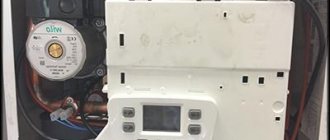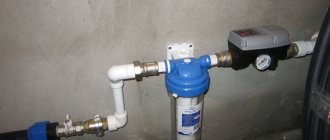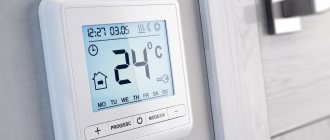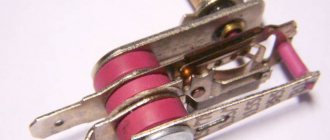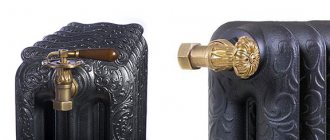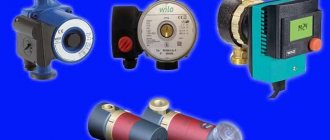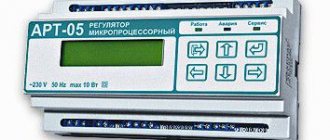Installation goals and benefits
Installing thermostats on radiators allows you to set the desired temperature in the rooms. The device changes the volume of coolant supply, which accordingly reduces the air temperature.
The thermostat is an excellent alternative to the ball valves that are familiar to many. Their use is not always convenient or advisable. The tap must be constantly opened and closed, which leads not only to temperature fluctuations in the room, but also to the failure of the part itself.
By installing a thermostat, these problems can be avoided. In this case, there is no need to periodically open and close the tap.
Pros of a thermostat:
- processes for adjusting the coolant supply are performed automatically;
- there is the possibility of zonal change of parameters;
- reducing the volume of coolant entering the battery allows you to reduce heating costs;
- no maintenance required.
In boiler rooms, a thermostat is used to protect against overheating and excessive loads. The device will prevent accidents by controlling the increase in temperature and water pressure.
Determining thermostat malfunction without dismantling
Instructions on how to check the operation of the thermostat without removing it from the car:
- Determine where the thermostat is located;
- Find the hose connecting the radiator to the thermostat;
- Start the cold engine;
- Check the temperature with a pyrometer. You can approximately measure the temperature with your own hands, but it is not recommended. In this case, you should be especially careful, since there are many moving and hot parts in the engine compartment;
Determining the temperature directly on the car - Check the pyrometer readings for trend to decide whether the thermostat needs to be replaced.
The thermostat is fully operational if during the first few minutes the pipe was cold or slightly heated, and then there was a sharp jump in temperature. If the hose slowly warmed up from the very start of the engine, it means the valve is stuck in the open position. If the pipe is not heated, there is a risk of a stuck open thermostat. A more accurate state of the device can be found by removing the thermostat.
Types of thermostats
Based on their operating principle, thermostats are divided into mechanical, electronic and semi-electronic. Each type differs in design, operating principle, and has certain advantages and disadvantages.
Mechanical
Manually configured device. The device consists of a thermal valve and a highly sensitive head.
The mechanism operates stably and efficiently without external energy according to the following principle:
- Under the influence of temperature, the volume of coolant in the system changes.
- The bellows senses the changes and moves the control valve.
- The sensing element moves the rod, which regulates and controls the flow of coolant into the radiator.
The main advantages of mechanical thermostats:
- low cost;
- ease of installation.
But mechanical devices have more disadvantages:
- less efficiency;
- the need for constant adjustment;
- rapid failure of the protective cap.
Electronic
Electronic thermostat
A microprocessor is installed inside this device, which is responsible for heating the radiator. The device is equipped with a sensor that measures the heating of the coolant or air in the room. The received data is used for configuration. This type of thermostat can be adjusted by degrees.
To adjust the electronic device, use a keypad. The indicators are reflected on the display. The electronic device has a mechanical part in its design that is similar to the device described above. The bellows in the device are cylindrical, the walls are made in the form of corrugations.
Expert opinion
Grebnev Vadim Savelievich
Heating system installer
Inside there is a substance that reacts to the surrounding temperature. When heated, it expands and increases the pressure inside. The position of the rod changes, thus regulating the volume of coolant. When the temperature decreases, the reverse process occurs. The service life of the electronic thermostat is at least 10 years.
Manufacturers offer users 2 types of electronic devices:
- closed - with auto-tuning;
- open - all settings must be entered independently.
Semi-electronic
The principle of their operation is similar to mechanical, but there are some differences. The bellows head is oriented to the room temperature. The sensor of the devices is remote. It is connected to the working part by a capillary tube.
Design and types of thermostats
Based on the principle of operation, thermostats are divided into two large groups:
- Direct-acting devices that respond to coolant temperature. Inside such devices there is a bellows filled with liquid, solid or gaseous material and a poppet locking mechanism. The working fluid of the bellows changes its volume with temperature changes and moves the rod, increasing or decreasing the flow of coolant into the radiator.
Such devices benefit in terms of cost, but are already obsolete. In apartments it is recommended to use thermostats of the second type.
- Devices with remote sensors and electric drive of the adjustment mechanism. They are more convenient to use, as they are adjusted directly to the desired air temperature in the room. Electronic control systems allow you to set your own heating modes for certain periods of the day; they are also programmed according to other parameters.
USEFUL INFORMATION: Individual heating in an apartment: dream or reality?
The thermostat is selected based on the size of the pipe connected to the device and the type of heating:
- Valves marked RTD-G are intended for installation in single-pipe supply systems with natural circulation.
- Devices marked RTD-N are used in two-pipe systems. They are also necessary if a sediment is installed for forced circulation of the coolant.
Professionals recommend choosing valves made of brass, bronze or stainless steel. They are more reliable and durable than silumin ones.
More information about all types of devices designed to regulate the temperature of radiators is written in this article. There you can also find ways to increase the heat transfer of batteries.
Device selection criteria
When selecting a thermostat, they are guided by the type of heating system installed in the house and the following characteristics:
- Material . The body is made of bronze, brass, nickel-plated or stainless steel. The optimal choice is stainless steel. The material is chemically neutral, does not rust and does not react with other metals. But the cost of such models is quite high. Bronze and brass appliances have the same service life. In this case, the quality of the alloy is important. It is carefully monitored by well-known manufacturers, so preference should be given to them.
- Method of execution . Radiators in houses are installed in different ways; accordingly, the valves are made straight (through) and angular (vertical and horizontal). There are models whose pipes and heads are located in 3 perpendicular planes.
- Compliance with the heating system . For single-pipe systems, large hydraulic resistance values on the control valves are not suitable. Therefore, models for them need to be selected with a wider cross-section. In the accepted classification, it is marked with the letter index G (for example, RTR - G). They are also suitable for two-pipe natural circulation systems. For two pipes with forced circulation, where the pressure reaches significant values, other models are used: marked N or D.
- Sensor type . Gas and liquid thermostats come with a remote or built-in sensor. It is better to use remote ones when the battery is behind thick curtains, the thermostat is installed vertically, the radiator depth is more than 16 cm or it is located in a niche. Devices with a built-in sensor require air circulation around them, so they are installed horizontally.
Do not try to install thermostats on all batteries. To ensure normal regulation in each room, it is worth equipping no more than 50% of heating devices with devices: 1 out of 2, 2 out of 3, and so on.
Difference between gas and liquid appliances
An important criterion for choosing a device is the type of internal filler.
When purchasing, you should pay attention to the following points:
. The gas reacts smoothly to temperature changes, and this does not cause excessive or sudden stress on the equipment.
Gas models have a long service life of about 20 years.- Liquid thermostats operate quickly . This affects the wear of working parts, but allows you to quickly respond to a drop or rise in temperature.
- In liquid thermostats, the sensor can be remote or built-in . If it is built-in, the device is placed in a horizontal position. It is advisable to install remote sensors when the device is covered with curtains, the thermostat is located vertically, the radiator is installed in a niche or at a distance of less than 10 cm from the window sill.
Thermostatic heads
Thermostatic elements for heating thermostats come in three types - manual, mechanical and electronic. They perform the same functions, but differ in different levels of comfort and capabilities.
Manual
Manual thermostatic regulators work like a regular faucet - by turning the regulator in one direction or another, the flow of coolant is adjusted. The cheapest and most reliable, but not the most convenient devices. To change the heat transfer, you must manually turn the valve.
Manual thermal head - the simplest and most reliable option
These devices are inexpensive and can be installed at the inlet and outlet of a heating radiator instead of ball valves. Any of them can be adjusted.
Mechanical
A complex device that maintains the set temperature automatically. The basis of this type of thermostatic head is a bellows. This is a small elastic cylinder that is filled with antifreeze. Antifreeze has a high expansion coefficient - when heated, it greatly increases in volume.
Thermostat device for a heating radiator with a mechanical thermostatic head
The bellows supports the rod, which blocks the flow area of the valve. Until the antifreeze in the bellows heats up, the rod is raised. As the temperature rises, the cylinder increases in size (antifreeze expands), it puts pressure on the rod, which increasingly blocks the flow area. Less and less coolant passes through the radiator, and it gradually cools down. The antifreeze in the bellows also cools down, due to which the cylinder decreases in size, the rod rises, more coolant flows through, and it begins to warm up a little. Then the cycle repeats.
Gas or liquid
With such a device, the room temperature is maintained correctly, but in general the delta depends on how inert the antifreeze in the bellows is. It can be filled with some kind of gas instead of antifreeze. Gases react more quickly to temperature changes than antifreeze, but are technologically more difficult to produce.
Antifreeze or gas in the bellows - there is not much difference
Liquids change volumes a little more slowly, but are easier to produce. In general, the difference in the accuracy of temperature maintenance is about 0.5 °C, which is almost impossible to notice. As a result, most of the presented thermostats for heating radiators are equipped with thermal heads with liquid bellows.
With remote sensor
The mechanical thermostatic regulator should be installed towards the room. This way the temperature is measured more accurately. Due to its large size, this installation method is not always possible. You can also install a thermostat for a heating radiator with a remote sensor. The temperature sensor is connected to the regulator using a capillary tube. It is located at any point at which it is more convenient for you to measure the air temperature.
With remote sensor
All changes in heat transfer from the radiator will occur depending on the air temperature in the room. The only disadvantage of this solution is the high cost of such models. But the temperature is maintained more accurately.
Electronic
The electronic thermostat for a heating radiator is even larger in size. The thermostatic element is even larger. In addition to the electronic filling, it also contains two batteries.
Electronic thermostats on batteries are large in size
In this case, the movement of the rod in the valve is controlled by a microprocessor. These models have a fairly large set of additional functions. For example, the ability to set the room temperature by the hour. How can this be used? Doctors have long proven that it is better to sleep in a cool room. Therefore, at night you can program the temperature lower, and in the morning, when it’s time to wake up, you can set it higher. Comfortable.
The disadvantage of these models is their large size, the need to monitor battery discharge (enough for several years of operation) and high price.
The best manufacturers of thermostats
The global market for heating appliances offers consumers many models of thermostats of various modifications.
Taking into account the assessments of experts and consumers, we can name the leading companies in this field, whose devices have demonstrated reliability and efficient operation:
- Mondial Electronics Co is a Chinese manufacturer that has proven itself in the production of consumer electronics and equipment for light industry. The company's products combine quality and low price.
- Devi is a Danish company that has been producing thermostats since 1942. Initially, production was aimed at producing heating elements for industry. Today the company is one of the world market leaders in the field of electric heating.
- RTC Electronics is a company from South Korea. Engaged in the development of electronic devices for home and industrial purposes. The products are well adapted to the needs of the domestic market.
- Techem is a manufacturer from Sweden, specializing in the manufacture of instruments and devices for automated metering of gas, water, electricity, and heat consumption.
- Valtec is a joint production of Russia and Italy. The main activity is the creation of engineering plumbing adapted to Russian water and heat supply systems.
- Terneo is a Ukrainian brand owned by DS Electronics. Since 2003, it has been developing and producing thermostats and voltage relays. Taking into account new technologies, improved devices are constantly being produced.
- Ranco is an Italian company that develops high-tech components for dies and molds. In Europe and the states, this name is considered synonymous with reliability.
Choosing a thermal mixer for the kitchen and bathroom
The operating principle of all thermostat mixers is similar. Using the adjustment, the required temperature is set once, and then the water supply valve simply opens.
They function the same way, but the model range is quite extensive. And each device has its own individual characteristics and advantages.
If, in addition to the standard spout, the faucet model requires the connection of a branch for the shower, then the left regulator has a corresponding switch, and does not simply turn the water on/off
Based on their purpose and installation point, thermostatic mixers are divided into four categories:
- for washing in the kitchen;
- with spout exclusively for washbasin;
- for bidet;
- with shower head and bath spout.
They are installed on a wall, countertop or plumbing fixture using an open mounting method. Or they are mounted in a closed way, when only the valves or levers and spout remain visible. And with this installation, all internal parts are hidden behind the cladding on the wall.
Most often, thermostatic mixers are installed in the bathroom. They are not so popular in the kitchen. The temperature of the water in the kitchen sink has to be constantly changed - either cold for drinking or filling the kettle, warm for washing food, or hot for washing dishes.
Continuously switching the thermocouple setting is not recommended. And the convenience of having a thermostatic mixer is reduced to almost zero in this case. And in the shower and washbasin the temperature is precisely what is required. Here it is more relevant.
Pros and cons of different models
Mechanical faucets with a thermostat integrated into the body are more reliable than their electronic counterparts. They will cost less than their counterparts. And if they break down, they are easier to repair.
But models with a display are more accurate and easier to operate. But if they malfunction, they can only be repaired in a specialized center.
Thermostatic mixers with mechanical adjustment provide for setting the desired temperature in steps of several degrees.
Electronic devices are adjustable smoothly, allowing you to specify any parameters in the settings within the operating range for a particular model. However, they require power supply. If there are power failures, there is a risk of not only being left without electricity, but also losing water supply.
Water mixers for domestic needs with thermostat:
- provide the required pressure with a stable temperature;
- completely safe to use;
- reduce waste of water;
- easy to install with your own hands;
- prevent scalding and exposure to ice showers;
- save energy (if installed in an autonomous hot water supply system).
Their only drawback is their high cost. However, in return - comfort, savings and safety.
What to look for when choosing?
The material for making the mixer body should be chosen carefully:
- bronze, copper or brass are the most durable and expensive;
- ceramics - not as reliable as metal, but looks more attractive;
- silumin (aluminum-silicon alloy) - cheap and short-lived;
- plastic – the lowest price and low reliability.
It is even more important to select the correct thermostat shutoff valve material. Leather and rubber options are cheap, but wear out fairly quickly. If solid suspensions get into the water tap, these gaskets can quickly fail.
Compared to a conventional mixer, their wear rate in a thermostatic analogue is an order of magnitude higher. It won’t take long for things to end up in a flood and a showdown with the neighbors below.
It is best to choose valves made of high-strength ceramics. They themselves are durable and will not damage the saddle.
But if the mixing device is installed with them, then you should forget about using force when tightening the valve all the way. The valve is unlikely to break, but the thermostat head will be torn off quickly.
If check valves and coarse filters are not included in the thermostatic mixer, then they will definitely need to be purchased and installed
The main problem with most faucets with thermostats is the differences in the standard wiring diagrams for hot and cold water pipes in Russia and Europe.
According to the standard, our DHW pipeline is connected to the plumbing fixture on the right, while they have it on the left. However, these devices were mainly developed and produced by European manufacturers, according to their rules.
When choosing a thermostatic mixer, it is extremely important to find out from the seller the diagram for connecting the water pipes to it. If the pipes are connected the other way around, the thermostat will simply break.
Devices for bathtubs and bidets must be adapted to Russian standards. Otherwise, you will have to change the configuration of the pipes, and this will be additional serious costs.
With kitchen models, this situation is somewhat simpler - they are connected using flexible outlets that can be rearranged without problems
And the last point is the presence of sufficient pressure in the water supply. The passports of thermostatic mixers indicate a minimum operating pressure of 0.5 bar.
If it actually turns out to be lower in the pipes, then the device will not be able to work properly. There is simply no point in installing it in such a water supply system.
Leaders in the production of thermal mixers
When choosing a thermostat mixer, preference should be given to models made specifically for Russia.
Foreign manufacturers have recently begun to produce this plumbing fixtures to meet domestic standards and requirements. This is exactly what you should look for in stores, so as not to rack your brains later when performing installation.
It is necessary to distinguish between thermostatic (also thermostatic) valves intended for heating systems (in the figure), and the mixing devices in question for sinks and showers
On the domestic market, faucets with a built-in thermostat are represented by the following brands:
- Oras (Finland);
- Cezares and Gattoni (Italy);
- Grohe, Kludi, Vidima and Hansa (Germany);
- Lemark (Denmark);
- Toto (Japan);
- NSK (Türkiye);
- Iddis and SMARTsant (Russia).
The Germans are the undoubted leaders in this industry. But other manufacturers are also trying to keep up, creating lines of different price classes.
Here you need to focus more on the materials of manufacture and the design of the product. However, one should not forget about the positive image gained over the years.
Review of recommended models
It is necessary to select a thermostat for a specific heating system, taking into account the conditions of its operation. But there are brands and models that are recommended by experts and many users.
Techem HKR
Techem HKR
Like all Techem brand products, the device is of unsurpassed quality. Experts emphasize the reliability of the design and long service life. This model is a serious, multifunctional unit with many modes and a bright display.
Powered by 2 Mignon batteries. Quick temperature adjustment saves energy costs. The operating mode can be programmed to suit your own needs. Apart from the high price, no disadvantages were found with the thermostat.
Valtec corner 1⁄2
Valtec corner 1⁄2
In this model, the thermostat is an angle valve, which allows you to automatically control the coolant flow with an accuracy of 1 degree. The requirement from the manufacturer is installation in a system with a maximum temperature of 110 degrees and a pressure of up to 10 atmospheres. Polusgon facilitates installation without interfering with the pipeline.
Advantages:
- compactness;
- easy installation;
- maintainability;
- Service life up to 30 years;
- low price.
Flaws:
- if the water pressure is above 10 bar, it can leak and flood the room;
- There are defective devices.
Danfoss Eco
The Danfoss EcoTM electronic programmable thermostatic element is used with thermostat valves with clip and threaded connections. The device has two sensors, which ensures the most accurate temperature control. The thermoelement reaction is only 3 minutes.
Advantages:
possibility of programming and control via Danfoss EcoTM App on a smartphone via Bluetooth;- the presence of adapters, making the thermocouple suitable for almost all existing valves;
- the presence of a function to turn off the device when there is a sharp drop in room temperature, which allows you to save energy when ventilating;
- the presence of an adaptive learning function, thanks to which the thermostat determines when to start heating the rooms in order to achieve the required temperature by a certain time;
- the presence of a valve testing function, thanks to which the thermostat fully opens the valve weekly and then returns it to its previous position to prevent the stem from sticking.
Oras Stabila
Oras Stabila
Finnish-made thermostatic valve with pre-adjustment. Designed for two-pipe systems with forced circulation. Consists of a control valve and a thermostatic head. The valve fits into the line in front of the radiator, and the head is installed on it.
How to adjust (reconfigure)
All thermostats are factory adjusted. But their settings are standard and may not match your desired parameters. If you are not satisfied with something in the work - you want it to be warmer/colder, you can reconfigure the thermostat for the heating radiator. This must be done with the heating running. You will need a thermometer. You hang it at the point where you will control the state of the atmosphere.
- Close the doors, put the thermostat head in the extreme left position - completely open. The room temperature will begin to rise. When it becomes 5-6 degrees higher than what you want, turn the regulator all the way to the right.
- The radiator begins to cool down. When the temperature drops to what you consider comfortable, slowly turn the dial to the right and listen. When you hear the coolant making noise and the radiator starting to warm up, stop. Remember what number is on the handle. It will need to be set to achieve the required temperature.
Adjusting the thermostat for a radiator is not difficult at all. And you can repeat this action several times, changing the settings.
Installation Features
The thermostat will work effectively if installed correctly. First of all, you need to determine the location of its installation. Installation height – at least 80 cm.
Expert opinion
Grebnev Vadim Savelievich
Heating system installer
It should be noted that the operation of thermostats is negatively affected by drafts, direct sunlight, and devices that emit heat. If these conditions exist, use an external sensor, installing it at a distance of 2 to 8 m from the battery.
In private houses, installation of devices begins from the upper floors, in apartments - from rooms with significant temperature fluctuations: living room, kitchen.
Sequence of work:
- Close the riser and drain the water.
- At a short distance from the radiator, cut off the horizontal pipe connections and disconnect them and the taps from the radiator.
- When installing the device in a single-pipe heating system, a jumper is additionally welded between the coolant supply and discharge pipes.
- From the thermostat valve and stopcock, remove the shanks with nuts and screw them into the radiator plugs.
- Assemble and install piping. Connect it with horizontal eyeliners.
Installation Features
Device setup
In electronic models, it is enough to set the desired temperature on the scale or display. If possibilities allow, select the temperature regime for the time of day and days of the week. This mode is optimal for dachas where the owners appear intermittently.
Mechanical models require longer setup:
- Close windows, doors, vents, turn off the hood to limit heat leakage
- Place a thermometer in the room.
Turn the thermostat head to the left until it stops so that the valve opens. In this position, maximum heat transfer from the battery is achieved.- After warming up the room by 5-6 degrees, shut off the flow of coolant by turning the device valve to the right.
- The temperature will begin to drop. Once it reaches the levels you want, begin to slowly open the valve until you hear the sound of water. The head should become warmer.
- Leave the valve in the selected position. In the future, it will work at the temperature you set.
How to install correctly
The thermostat for a heating radiator can be installed at the inlet or outlet of the heating device - there is no difference, they work the same in both positions. How to choose a place to install?
According to the recommended installation height. There is such a clause in the technical specifications. Each device is calibrated at the factory to control temperature at a certain height and usually this is the upper radiator manifold. As a standard, the heat regulator is installed at a height of 60-80 cm, so it is convenient to adjust it manually if necessary.
Installation diagrams for heat regulators for radiators
If you have a bottom connection (bottom pipe distribution), there are three options - choose a device that can be installed at the bottom, install a model with a remote temperature sensor, or reconfigure the thermostat. The procedure is simple, the description should be in the attached instructions. Your task is to set the required temperature by rotating the knob to the left and then to the right.
Installation is standard - on fum tape or linen winding with packaging paste
The installation process itself is standard. The valve has a thread. The appropriate fittings are selected for it or a matching thread is cut on the metal pipe.
One important point that those who want to install a thermostat for a heating radiator in apartment buildings should remember. If you have a single-pipe installation, they can only be installed if there is a bypass - a section of pipe that stands in front of the battery and connects the two pipes to each other.
If you have a similar wiring (there may not be a pipe on the right), a bypass is required. The thermostat should be installed immediately behind the radiator
Otherwise, you will regulate the entire riser, which your neighbors will definitely not like. For such a violation, a very substantial fine can be issued. Therefore, it is better to install a bypass (if not).
FAQ
What happens if you install regulators of reduced resistance on the 2nd tube? What could this mean other than overspending?
You want to put an expensive model where you can get it cheaper. This is not advisable. In general, nothing will explode and nothing will fall off. This may result in incorrect operation of the regulator.
Is it possible to regulate the heating of the battery with a ball valve to shut them off?
The ball valve has only 2 positions: open and closed. It is impossible to regulate the heating by setting it to half position. The faucet will quickly fail due to the accumulation of salt and pieces of rust and will stop turning.
From an economic point of view, installing thermostats is especially advisable in private houses with autonomous heating. In apartments with a centralized coolant supply, the use of these devices will help improve the microclimate, achieving a comfortable mode without radically blocking the radiators and systematic ventilation.
Operating principle of a heating radiator thermostat (video)
The use of heating radiator thermostats ensures a comfortable air temperature in each room. In addition, a correctly installed thermostat will help reduce heating costs, and thereby save part of the family budget. The device is easy to install yourself, but you can always entrust this work to professionals.
In some cases, it becomes necessary to remove the thermostat from the heating radiator. For what? If the riser passing through your apartment heats up normally, but the radiators remain completely cold, then first you should try to bleed out the air (perhaps it is because of the airlock that this problem arose).
If bleeding the air does not help, there is nothing left to do but remove the thermostat from the battery: there is a high probability that the problem lies with it.
The fact is that if the thermostat has an electronic head, then it carries out “decalcification” once a week. But thermostats with a regular head cannot perform this procedure, and, as a result of contamination of the water used as a coolant, the valve gradually becomes “overgrown” with scale and sediment. Over time, it simply stops opening normally.
